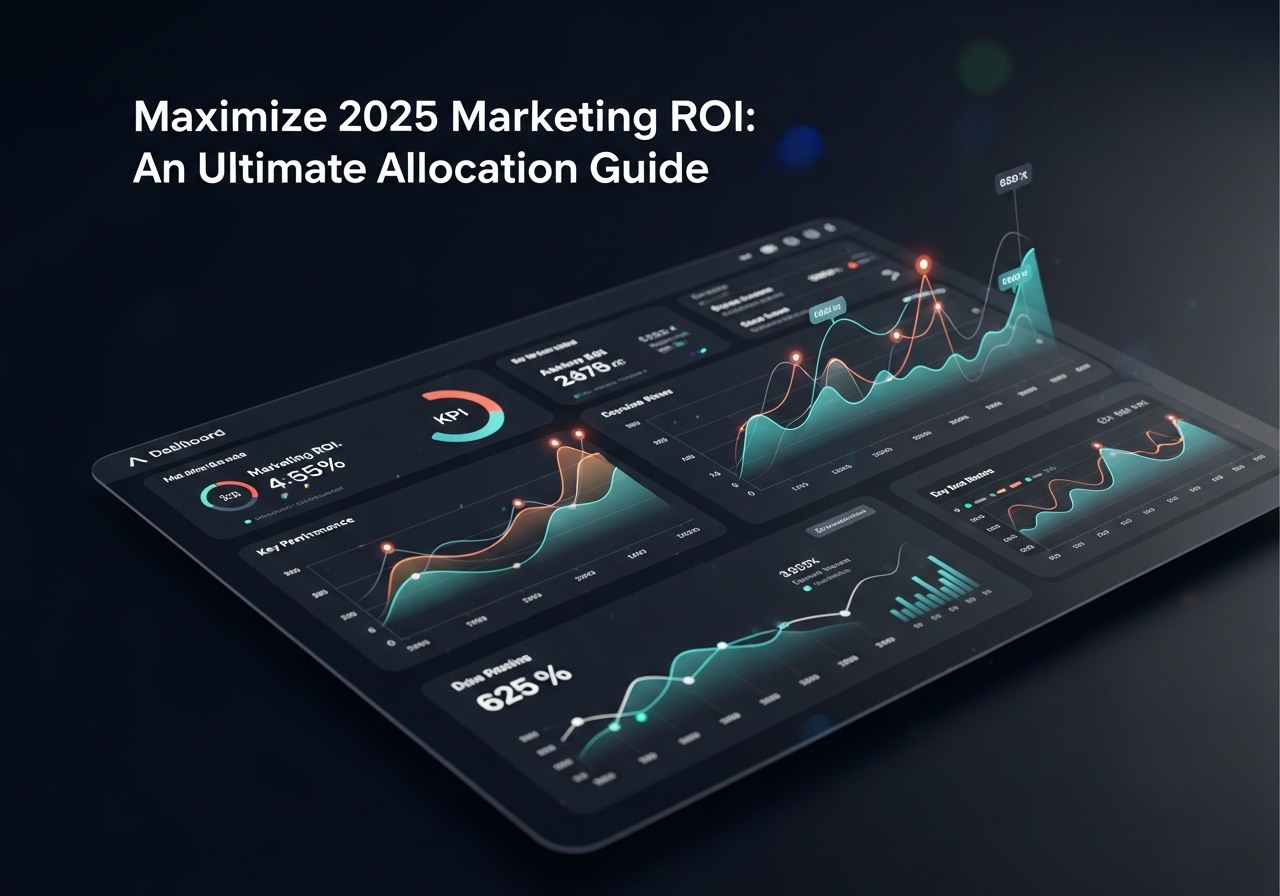The State of Marketing Budgets in 2025
In a world where 59% of CMOs report insufficient budgets to execute their marketing strategies in 2025, smart resource allocation isn’t just good practice—it’s survival. Despite marketing budgets remaining flat at 7.7% of overall company revenue this year, the pressure to deliver results continues to mount as economic uncertainties loom large. So, how can marketers do more with what they have? The answer lies in strategic marketing resource allocation.
Marketing budgets have stabilized but stalled at levels that many CMOs find insufficient. According to the Gartner 2025 CMO Spend Survey, marketing budgets remain consistent with last year at 7.7% of overall company revenue. This plateau comes at a challenging time when marketing teams are expected to deliver more—more leads, more engagement, and more revenue—often with the same resources as previous years.
The landscape has evolved significantly. After a period of decline, marketing spending is on the rise again, with businesses adapting their strategies to stay competitive and focusing on high-ROI activities. You can explore more strategies on our blog. UK marketing budgets, for instance, returned to growth in the final quarter of 2024 after stagnating in Q3, with a net balance of 1.9% of companies increasing their marketing budgets.
Where the money is going:
- Events have seen the highest growth at +12.3%, indicating a strong return to in-person networking and trade shows.
- PR investment has increased by 6.8% as companies focus on brand reputation.
- Direct marketing (+5.6%), sales promotions (+4.1%), and market research (+3.1%) have all seen moderate increases.
Data-Driven Allocation: The Foundation of Modern Marketing
The days of gut-feeling marketing investments are long gone. In 2025, data reigns supreme in resource allocation decisions. The advantages of using data to inform marketing strategy are clear: 35% of marketers report reaching target audiences more effectively, 34% see increased ROI, and 32% plan media mixes more effectively. Yet, surprisingly, 87% of marketers see data as their organization’s most underutilized asset.
Implementing data-driven allocation:
- Establish clear KPIs aligned with business objectives.
- Implement robust tracking across all marketing channels.
- Regularly analyze performance data to identify high and low-performing areas.
- Reallocate resources based on performance metrics, not assumptions.
With nearly 47% of businesses lacking a defined digital marketing strategy, there’s a significant competitive advantage for those who embrace data-driven decision-making. Organizations that leverage data and analytics to optimize performance are seeing substantial productivity gains despite flat budgets.
Channel Allocation Strategies for 2025
The digital marketing landscape continues to evolve rapidly, requiring marketers to be increasingly strategic about where they invest their resources. The latest statistics reveal clear patterns in what’s working and where smart marketers are placing their bets.
Video dominates content ROI: Short-form video has emerged as the top-performing content format, delivering the highest ROI at 21%, followed by images (19%) and live-streamed videos (16%). This explains why YouTube, Instagram, and TikTok are the platforms where marketers plan to invest most heavily in 2025.
Audio content on the rise: An impressive 91% of marketers plan to maintain or increase investment in podcasts and audio content in 2025. This isn’t surprising considering that 46% of weekly podcast listeners have purchased a product advertised on a podcast.
Influencer marketing evolves: Micro-influencers (10k-100k followers) proved most successful for both B2B and B2C brands in 2024, with Facebook yielding the highest influencer ROI at 28%. This suggests that targeted reach and authenticity are outperforming raw follower counts.
When allocating resources across these channels, consider the 70-20-10 rule:
- 70% to proven, high-performing channels.
- 20% to promising channels with growing returns.
- 10% to experimental channels with potential for future growth.
Capacity Planning: Finding the Sweet Spot
Effective resource allocation isn’t just about distributing your marketing budget—it’s about optimizing how your team’s time and talents are deployed. The most successful firms aim for 70-80% utilization rates, leaving room for unexpected client demands, professional development, innovation, and administrative tasks.
Beyond knowing who’s available, you need to understand who’s right for each project. Modern resource allocation tools help you track:
- Technical capabilities
- Behavioral skills
- Industry experience
- Client relationship history
- Development goals
This matching process ensures you’re not just filling seats but strategically deploying your most valuable assets—your people—where they can make the greatest impact.
Risk Management in Marketing Resource Allocation
In today’s uncertain economic climate, building flexibility into your resource allocation strategy isn’t optional—it’s essential. Smart resource allocation includes building buffers for:
- Sick leave and holidays
- Project scope changes
- Market fluctuations
- Technology updates
- Client requirement shifts
Remember that perfect resource allocation doesn’t mean utilizing every minute of every day. It means creating a sustainable, flexible system that supports both your business goals and your team’s wellbeing.
Personalization: Where to Invest for Maximum Returns
Personalization has moved from a nice-to-have to a necessity, with 96% of marketers reporting that personalized experiences increased sales. However, effective personalization requires strategic resource allocation across several key areas.
Audience understanding: Millennials remain the primary target for over 70% of marketers in 2025, with interest in targeting Gen Z also increasing year-over-year. Meanwhile, interest in marketing to Gen X and Baby Boomers has decreased by over 30%.
Values-based marketing: Sustainability matters significantly to younger generations: 64% of Gen Z and 63% of Millennials are willing to pay more for environmentally sustainable products. In fact, one in four have even lessened ties with a business due to unsustainable practices.
Channel personalization: Different demographics respond differently to various channels. For example, while email marketing continues to deliver one of the highest ROIs across all digital channels, its effectiveness varies significantly by age group and must be personalized accordingly. Effective marketing is a core pillar of the CDM Suite philosophy.
Timeline Management and Continuous Optimization
Resource allocation isn’t a one-time task. It requires continuous monitoring and adjustment as projects evolve and market conditions change. For instance, when unexpected situations arise—like a key team member becoming unavailable—having clear visibility of all your resources means you can pivot quickly without disrupting other projects.
Quarterly review cycle:
- Evaluate performance against KPIs.
- Identify underperforming and overperforming channels.
- Analyze cost per acquisition across channels.
- Reallocate resources based on performance data.
- Set new targets for the coming quarter.
This continuous optimization approach ensures your marketing resources remain aligned with business objectives and market realities throughout the year.
Conclusion: Strategic Allocation in Action
As we navigate the remainder of 2025, the marketers who will thrive are those who approach resource allocation strategically—balancing data-driven decisions with the flexibility to adapt to changing conditions. The digital advertising and marketing industry, currently estimated at $667 billion, continues to grow despite economic uncertainties. With nearly 6 billion people predicted to be using the internet by 2027, the demand for strategic marketing will only increase.
By implementing the allocation strategies outlined in this post—from data-driven decision-making to channel optimization to team capacity planning—you’ll be positioned to maximize your marketing ROI regardless of budget constraints.
Ready to take your marketing resource allocation to the next level? Find out EXACTLY what’s missing in your marketing strategy with our free 3-minute marketing assessment. Get a custom growth plan tailored to your business’s unique needs and goals. Take the free assessment today!



